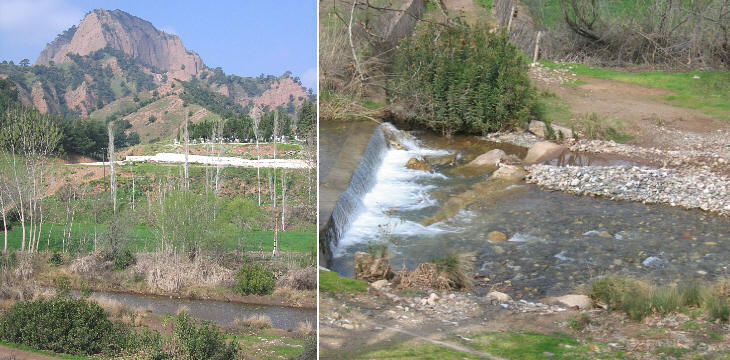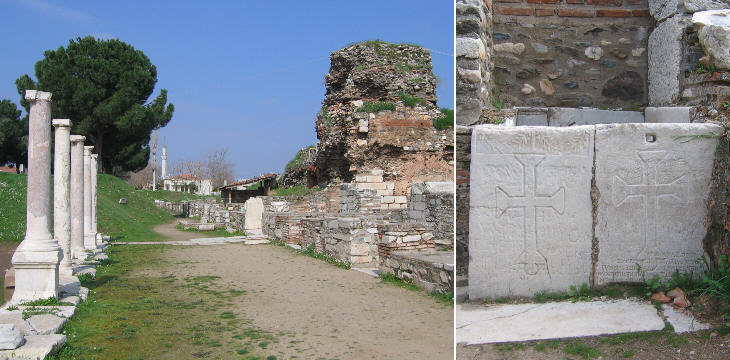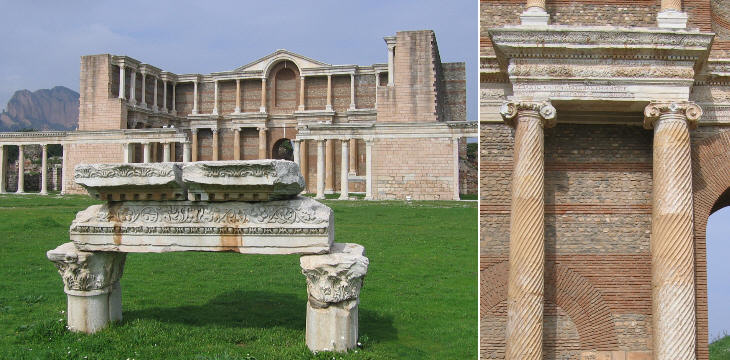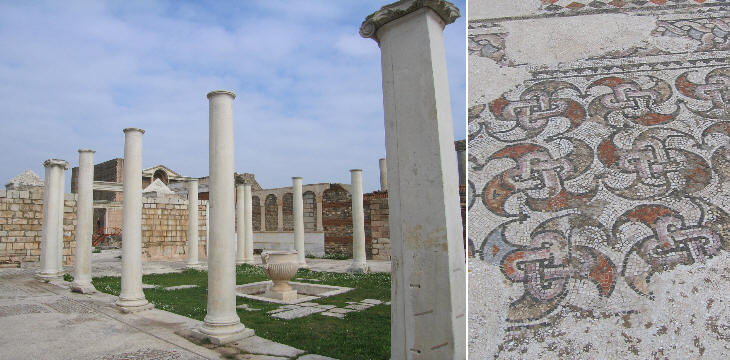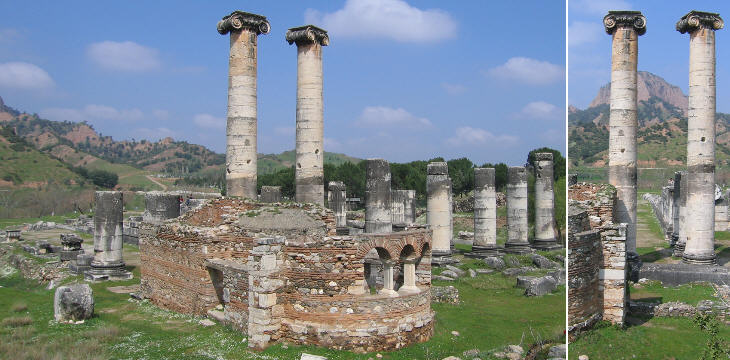  What's New! Detailed Sitemap All images © by Roberto Piperno, owner of the domain. Write to romapip@quipo.it. Text edited by Rosamie Moore. Page added in May 2006. |
 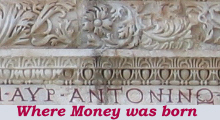 - Sardis - Sardis(inscription in the Gymnasium making reference to Emperor Caracalla) In the large and well farmed valley of the River Hermos (Gediz) in the historical region of Lydia, few travellers are likely to notice a small stream near the village of Sart. The Pactolus River as the stream is called, deserves attention, especially from those who place a money tag on everything and everybody, because the Pactolus is their Ganges, their sacred river where the god they worship was born some 2,500 years ago.
The Pactolus was so rich in gold bearing sands that the kings of Lydia first minted coins of a weight and purity which was guaranteed by the seal of the king. The name of Croesus, the last king of Lydia, has become a synonym for a very rich man. His capital Sardis was conquered by the Persians in 546 BC and it became the western gateway of their immense empire. Very little is left of that ancient period of Sardis, because the city was almost entirely destroyed by an earthquake in AD 17. At that time Sardis was part of the Roman province of Asia, which also included Pergamum, and it was rebuilt by Emperor Tiberius and his successors. Its imposing ruins demonstrate its wealth during Roman rule.
The importance of Sardis declined after it was sacked by the Goths in 267 AD and it was eventually abandoned in 1402 when Tamerlan and his Mongols razed it to the ground. The excavations of the Roman city which had expanded outside the ancient acropolis have brought to light the Byzantine town (especially shops) which nested inside the Roman buildings.
The most imposing building of Roman Sardis is the (much reconstructed) portico of a Gymnasium. Its design reflects the elaborate architecture of the Severian dynasty.
The vast courtyard of the Gymnasium was the site where students had their physical training as the final purpose of the Roman pedagogic system was summarized by Juvenal's words Mens sana in corpore sano "A healthy mind in a healthy body" (Satires, X, 356).
A basilica adjoining the Gymnasium was turned into a synagogue towards the end of the IVth century when the population of Sardis had already significantly shrunk. Its pavement was then decorated with geometric mosaics based on Solomon's knots, a symbol of wisdom which Jews shared with other cultures (Sardis was not so far from Phrygia, where Alexander the Great cut the Gordian knot).
Artemis (Diana) had many worshippers on the Aegean coast of today's Turkey. The Artemision of Ephesus was one of the Seven Wonders of the Ancient World. Sardis too had an Artemision at the foot of its acropolis. The ruins of the Artemision belong to a twin temple dedicated by Emperor Antoninus Pius to Artemis and to his wife Annia Faustina. A typical example of a Roman twin temple was built by Hadrian and dedicated to Venere e Roma. While the section of the temple dedicated to Artemis can only be guessed at by observing its foundations, the two remaining columns of the portico which preceded the section dedicated to Annia Faustina give a better idea of the gigantic dimensions of the sanctuary, especially when compared to a small Byzantine church built at a later period. Clickable Map of Turkey showing all the locations covered in this website (opens in another window).  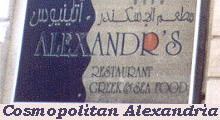 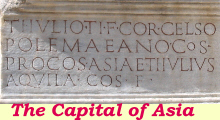 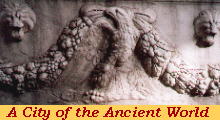 |
